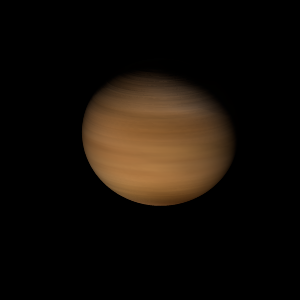|
|
Space Astro
|
Info for exoplanet "Buda Hizu Bo"
| Scientific (actual) data |
|---|
| Name | TOI-1269 b |
| Planet status | Confirmed |
| Planet mass | 0.0201 |
| Radius | 0.2025 |
| Orbital period | 4.25299 |
| Semi major axis | 0.05 |
| Orbit eccentricity | 0 |
| Discovered | 2024 |
| Updated | 2024-06-26 |
| Tzero tr | 2458690 |
| K | 2.7 |
| Publication | Published in a refereed paper |
| Detection type | Primary Transit |
| Mass measurement type | Radial Velocity |
| Radius measurement type | Primary Transit |
| Alternate names | TOI-1269.01 |
| Star name | TOI-1269 |
| Right ascension | 249.7° |
| Declination | 64.56° |
| Star distance | 172.14 |
| Star temperature | 5517 |
| Wikipedia article | TOI-1269 b |
Back
| |
| Fictional info (?) |
|---|
| Suggested name | Buda Hizu Bo |
| Planet type | Small hot gas planet |
| Having almost no atmosphere to retain heat, it has surface temperatures that vary diurnally more than on any other planet in its solar system, ranging from 140°K (-133°C) at night to 1050°K (777°C) during the day across the equatorial regions.
The outer atmosphere is visibly segregated into several bands at different latitudes, resulting in turbulence and storms along their interacting boundaries. A prominent result is the "great yellow spot", a giant storm that is known to have existed for centuries since it was first observed by radar.
The sinister lakes are mostly full of hostile primitive technological beings known to feed at the sea by hunting a substance called "Hyushu Gyuo". They are believed to be not similar to the Nzowocho Ze but have fur and vary in size from 50 to 100 cm. The Pyuso are able to survive temperatures from 60 to 100°C and even the acidic environment which is common on this planet. |
| Estimated population | 100000 |
| Atmosphere | Oxygen | 50% |
| Water | 31% |
| Methane | 17% |
| Carbon dioxide | 1% |
| Atmospheric pressure | 0.0013 bar |
 |
| No known satellites |
| Google search for Buda hizu bo |
|
Website by Joachim Michaelis
|
|
|
|